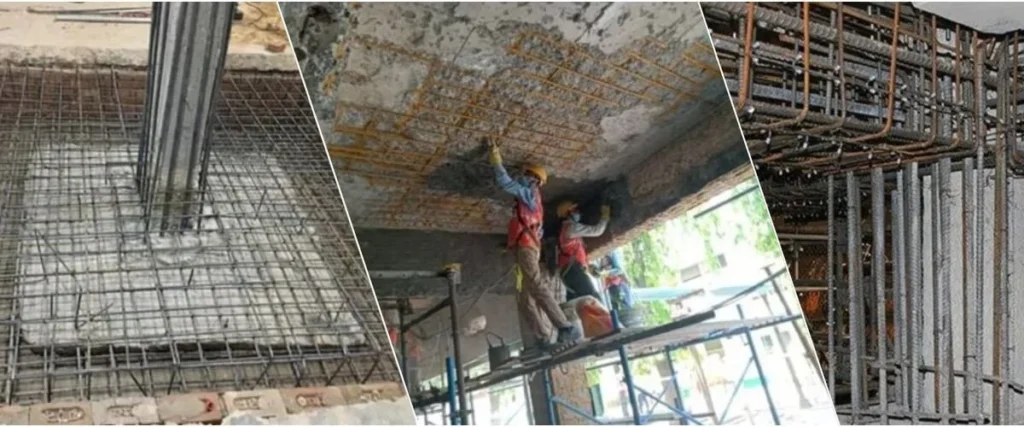Every building, whether residential or commercial, undergoes wear and tear over time due to factors like weather conditions, poor construction quality, and aging materials. Structural repairs play a crucial role in maintaining the strength and durability of these structures. They not only restore the building’s integrity but also ensure safety for occupants. This article explores the importance, types, methods, and benefits of structural repair services in India.
What Are Structural Repairs?
Structural repairs refer to the process of restoring and strengthening the load-bearing components of a building, such as columns, beams, slabs, and foundations. Over time, these components may develop cracks, corrosion, or deformation due to excessive loads or environmental stress. Repairing them prevents further damage and maintains the stability of the structure. The aim is to extend the building’s lifespan and enhance its performance under various conditions.
Why Are Structural Repairs Important?
Neglecting structural repairs can lead to severe consequences like weakening of the foundation, water leakage, or even collapse in extreme cases. Regular inspections and timely repairs help detect issues early. They ensure that buildings remain compliant with safety standards and provide a secure environment for occupants. Moreover, maintenance and structural rehabilitation reduce long-term repair costs, making it a smart investment for property owners.
Common Causes of Structural Damage
Buildings face several issues that demand structural repair solutions. These include corrosion of steel reinforcement, water seepage, settlement of foundations, design flaws, and overloading. Environmental factors like humidity, temperature variations, and pollution also contribute to material degradation. In coastal regions, chloride attack is a major cause of concrete deterioration. Identifying the root cause is essential before planning any structural strengthening or repair activity.
Types of Structural Repairs
Structural repairs vary based on the extent and nature of damage. Minor repairs include crack filling, epoxy injection, or patch repair, while major repairs involve RCC strengthening, jacketing, and foundation stabilization. Other common methods include carbon fiber wrapping, guniting, and shotcreting. Each technique is selected after a detailed structural audit to ensure long-term stability and durability of the building components.
Structural Audit Before Repairs
A structural audit is the first step before initiating any repair process. It involves inspecting and assessing the health of the structure using visual observation, non-destructive testing (NDT), and material analysis. The audit helps determine the severity of damage and recommend suitable repair and rehabilitation methods. In India, regular structural audits are mandatory for older buildings, especially in cities like Mumbai, Pune, and Delhi.
Structural Strengthening Techniques
When damage is extensive, structural strengthening methods are adopted to improve load-carrying capacity. Techniques such as carbon fiber wrapping, steel jacketing, and fiber-reinforced polymer (FRP) systems are widely used. These methods enhance tensile strength and prevent further cracking. Carbon fiber wrapping, in particular, is gaining popularity in building restoration projects due to its lightweight and high-strength properties.
Foundation Repair and Strengthening
Foundation issues can compromise the entire building’s stability. Structural foundation repair includes methods like underpinning, grouting, and micro-piling to stabilize weak soil or damaged footings. Early detection of foundation settlement is essential to avoid severe structural failures. Modern foundation strengthening solutions help in distributing loads evenly and restoring balance to the entire structure.
RCC Repair and Rehabilitation
Reinforced Cement Concrete (RCC) structures often require specialized RCC repair and rehabilitation techniques. These include removing damaged concrete, cleaning corroded steel, applying corrosion inhibitors, and using polymer-modified mortars. The process ensures better bonding and restores the strength of concrete elements. In high-rise buildings, RCC structural rehabilitation is vital for ensuring long-term performance and safety.
Crack Repair and Water Leakage Control
Cracks are among the most common signs of structural distress. Crack repair methods include epoxy or polyurethane injection, which fills the gaps and restores load transfer capacity. Alongside, water leakage problems are treated through waterproofing membranes and chemical grouting. Timely crack and leakage repairs prevent moisture intrusion and corrosion, thereby preserving both the aesthetics and structural health of the building.
Role of Advanced Materials in Structural Repairs
Modern structural repair materials such as polymer-modified concrete, epoxy resins, carbon fiber composites, and micro-silica enhance the effectiveness of repair works. These materials offer high durability, quick setting time, and resistance to environmental stress. With the advancement in repair technologies, engineers can now restore old or damaged structures efficiently without complete demolition or reconstruction.
Choosing the Right Structural Repair Contractor
Selecting an experienced structural repair contractor is critical for successful restoration. A professional contractor will conduct a detailed assessment, use advanced techniques, and follow safety standards. Look for companies that specialize in RCC strengthening, retrofitting, and rehabilitation with proven expertise. Checking their previous projects and certifications helps ensure reliability and quality workmanship.
Preventive Maintenance for Long-Term Safety
Preventive maintenance is key to avoiding costly structural repairs in the future. Regular inspections, waterproofing, and protective coatings safeguard the building from environmental damage. Monitoring visible signs like cracks, leaks, or corrosion helps identify problems early. A proactive approach towards building maintenance increases the lifespan and ensures safety for all occupants.
Benefits of Professional Structural Repair Services
Professional structural repair services offer several benefits, including enhanced building safety, restored strength, improved aesthetics, and compliance with safety regulations. Moreover, expert contractors use advanced materials and equipment to ensure precise results. Investing in professional repair and rehabilitation not only protects property value but also provides peace of mind to owners and occupants.
Environmental Impact and Sustainability
Sustainable structural repairs help minimize waste and reduce the carbon footprint associated with demolition and reconstruction. Using eco-friendly repair materials and recycling damaged concrete contributes to environmental conservation. As urban infrastructure continues to age, sustainable building rehabilitation practices play a vital role in promoting greener construction and longer-lasting structures.
Structural repairs are essential for maintaining the safety, functionality, and appearance of buildings. Whether it’s a residential apartment or an industrial complex, timely repair and strengthening can prevent severe damage and financial losses. By choosing professional structural repair contractors, property owners ensure quality work, durability, and compliance with safety standards. Regular inspections, preventive maintenance, and the use of advanced materials together build a stronger and more sustainable future for urban infrastructure.


